Why is the GymRat Challenge considered a must-go event for basketball teams all over North America?
Founder John Kmack's innovative ideas and "gym rat gene" made his events some of the best and most respected in the grassroots basketball industry
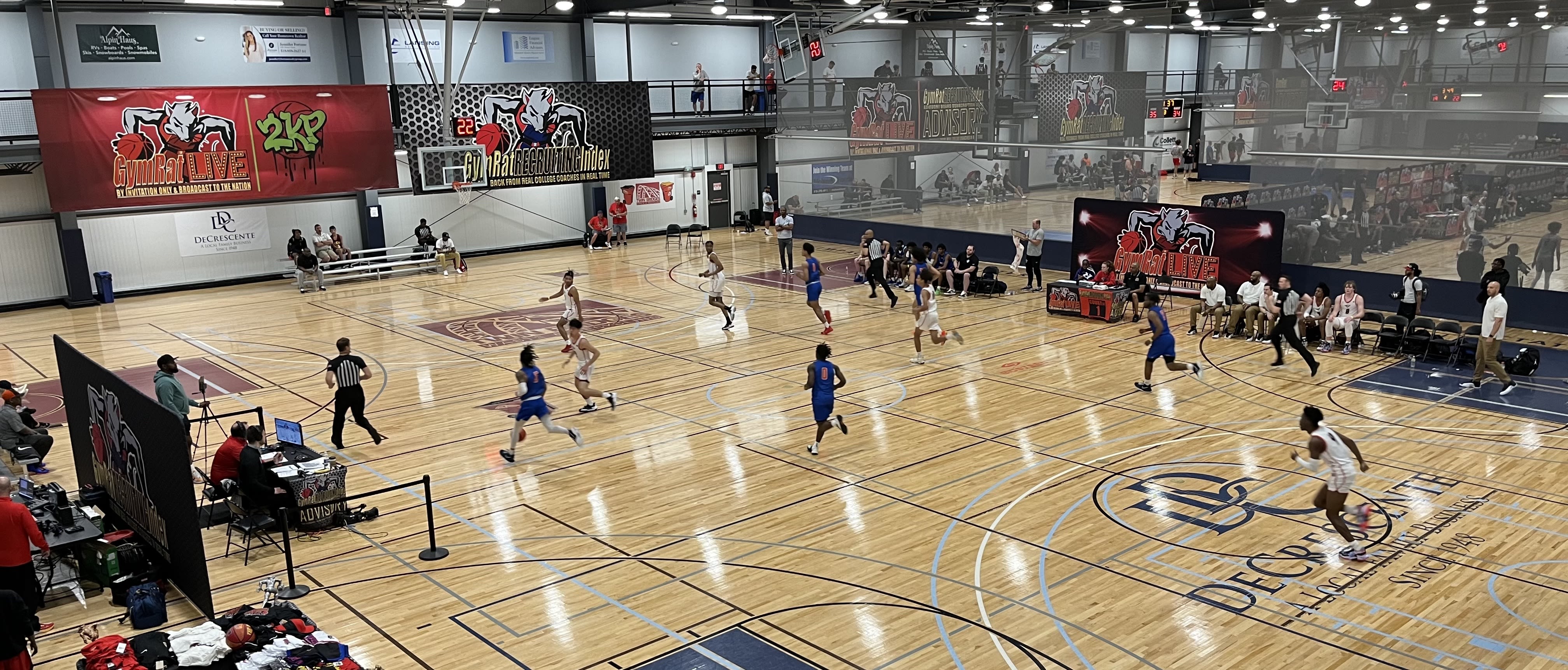
It is a hot Sunday afternoon in June at the Impact Athletic Center in Halfmoon, New York -- one of four facilities playing host to the girls 2022 GymRat Challenge.
The tournament, host to over 240 teams this year, has begun to wind down. Many of the athletes have already packed up and gone home, having been unable to clinch a playoff spot after two rigorous days of pool play. The coaches of the teams who found success this weekend all head upstairs for a quick meeting before the playoffs.
A man who looks to be far too short to be hanging around a basketball tournament leads them to a small lounge area overlooking the six courts. A large white poster board is squeezed under his arm.
He is dressed in a long-sleeve quarter-zip and black sweatpants, attire most would think too hot for today, especially in a humid basketball gym.
A large GymRat Challenge 25th anniversary emblem proudly emblazons the front of his jacket, and as he turns to address the coaches, all of which are noticeably taller than he is, his words sound out with a confidence that makes one quickly forget that fact.
“Hello coaches," he bellows. "My name is John Kmack. I’m the CEO of the GymRat Challenge. I know there are a lot of tournaments out there, but after 20 years, I can confidently say we do this as well as anyone in the country.”
In a politically divided nation, Kmack's opinion is widely shared.

Kmack has always had what he likes to call the “gym rat gene."
While you won’t find the term in any science textbook or encyclopedia, Kmack has a definition for Webster should they ever come calling:
Gym-Rat [jim-rat] n. A person of athletic origin
-adj. 1 outworks those around them; 2 puts team ahead of self; 3 achieves with integrity; does not make excuses; finds ways; 4 hate to lose more than they love to win because they can’t stand to see the smiles on the faces of those who beat them
It is the creed that he has used to define himself his entire life. It led him to a lifelong obsession with basketball, which he has now turned into a career as the CEO of his own series of annual basketball tournaments, the GymRat Challenge.
The tournaments have drawn comparisons to Nike’s Elite Youth Basketball League, the highest profile AAU basketball circuit in the world.
Tom Huerter, father of Sacramento Kings guard Kevin, and a longtime AAU coach with 20 years of GymRat experience, said, ““It’s a unique event.
"It’s always been one that affords great competition, it’s always been one that is well-run. It’s definitely a highlight of our schedule when we’re putting it together in the offseason that the GymRat is a must-play event.”
While the EYBL and the GymRat have many similarities, they differ greatly in one aspect. One is run by a multi-billion dollar company with near unlimited resources. The other is run by a man working out of his garage with his mom and a few old friends.
“What John’s been able to do is primarily just a tribute to him,” said Jim Hart, director of the City Rocks, one of the EYBL’s premier teams.
“Usually an event starts like, they have the best teams, that’s why other great teams want to follow and join. First contact with John, you instantly realize that he’s about his business. What he says is going to happen is going to happen.”
One of the major things that separate a run-of-the-mill tourney from a shoe company event is branding.
“The branding at a Nike event is different," Hart said. "There’s giant banners hanging from the ceilings. It feels like the Celtics championship banners. When you walk in the gym, you know you’re at a Nike EYBL event.”
Only Nike sponsored teams are allowed to participate in those events. Many of the teams are sponsored by NBA players, such as Brooklyn Nets forward Kevin Durant’s Team Durant or Washington Wizards guard Bradley Beal’s Brad Beal Elite.
The Nike logo is plastered everywhere, from ceiling banners to picture stands and merchandise. No matter where you look, the company’s name is there.
Kmack’s goal is to mimic -- and surpass if he can -- this professionalism and elite feeling.
Banners detailing every facet of the GymRat challenge adorn the walls of each facility Kmack uses, detailing all of the services the Challenge has to offer. There’s no such thing as enough marketing and visibility, Kmack said.
“Most of these other tournaments, you go to a random gym, it’s a gym and there’s refs and a score. You’re playing a game, but you don’t realize you’re at an event. At the GymRat Challenge, you walk in the gym and you see the branding all over similar to a Nike event," Hart said.
"(Kmack has) the backsplash banners, photo opportunities for the kids, people interviewing them, people scouting them. Those are things you just don’t see happen at regular tournaments, and you see them on the shoe circuits. John’s been able to create an atmosphere in a small upstate city without the direct backing of a shoe company and that’s really just him. It’s the skill of the entrepreneur.”
Huerter said, “There’s a lot of people that want to talk about bigger events, events that have 36 courts under one roof. “I don’t think the athletes remember those events any more than they do the GymRat.””
“I think the GymRat is the one non-sneaker event that made every kid feel like they were playing in a major sneaker event."
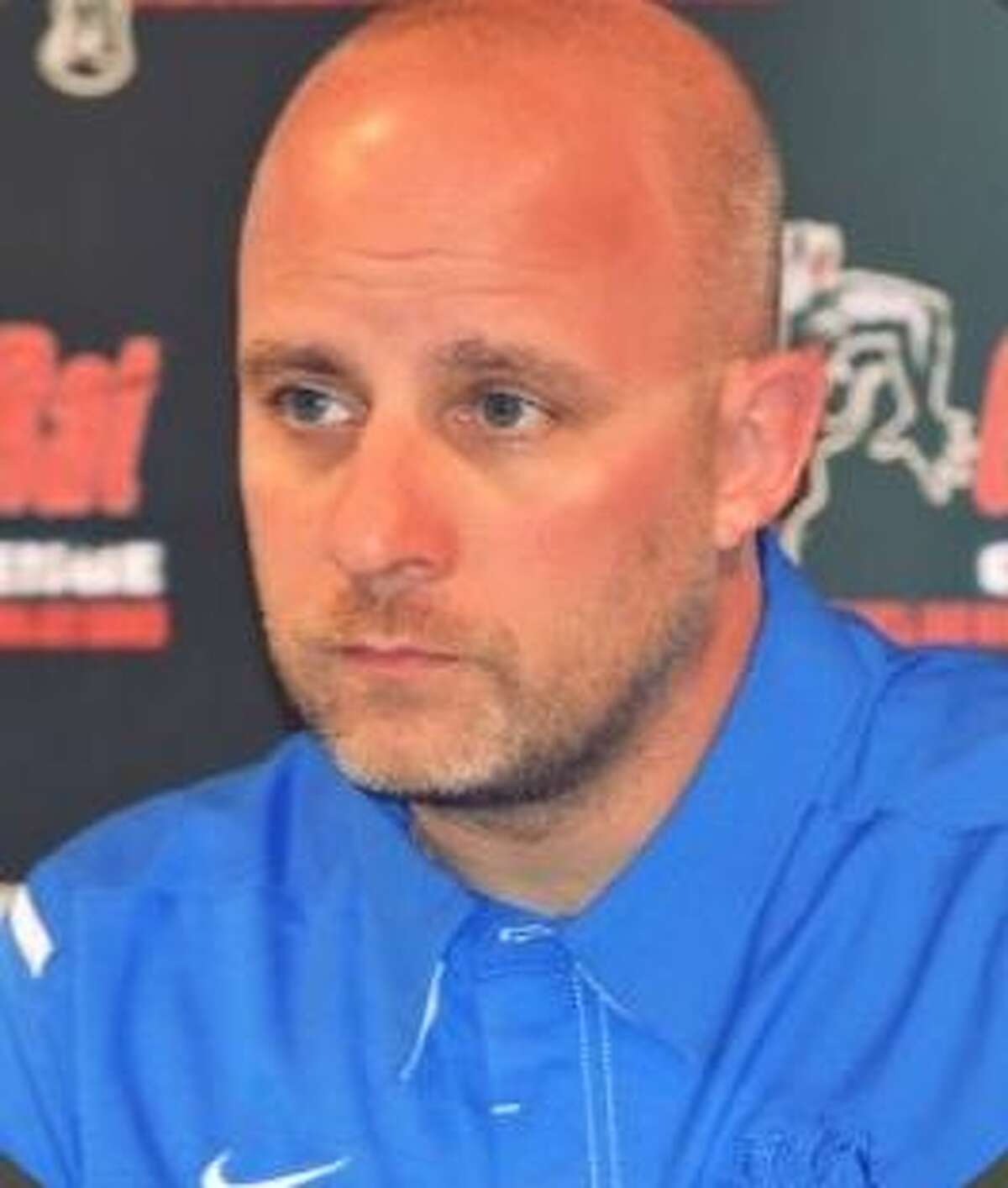
John Kmack, CEO of the GymRat Challenge
John Kmack, CEO of the GymRat Challenge
Each GymRat Challenge is a two-day event. The boys play on Memorial Day weekend, while the girls follow up two weeks later.
The weeks leading up to the event are the most critical, and it takes all Kmack’s focus to stay on course.
“I feel like I’m living one day ahead of a straight jacket, from the middle of March to the middle of June,” he said.
“There are days when that thing is definitely gaining on me.”
“It’s organized chaos,” said Tucker Green, Kmack’s brother-in-law and right-hand man when it comes to setting up event facilities.
In the week leading up to Memorial Day, Green, Kmack, and Kmack’s mother, Sheila, all spend hours each day sorting through merchandise and double-checking the staff list. Kmack hosts a last round of meetings with his site coordinators, a group of senior staff and close friends who have helped him run every tournament for over two decades, going over every last detail of the coming weekend, from sales goals to staffing needs and final scheduling tweaks.
Come Wednesday, Green loads everything into a uHaul. On Friday morning he goes from site to site with his moving crew. They stock the concessions, set up the entryways and scorers tables, and cover every facility wall-to-wall in GymRat posters and banners.
Friday evening is when the tournament staff roll into town. Depending on the amount of teams and facilities used that weekend, Kmack employs anywhere from 100-200 people at any given tournament, all of them overseen by his site coordinators. Each coordinator will tell you that the biggest separator of the GymRat from other events is the amount of staff Kmack hires, and how strictly he demands excellence.
“The biggest difference between the GymRat and other tournaments is the amount of staff we put in place to make sure that things are smooth and successful,” said Jeremy Dubay, one of Kmack’s site coordinators and a 22-year GymRat veteran.
“Every tournament is going to have problems, it doesn’t matter. Could be the parents, could be the coaches, every tournament will have them. It’s how you effectively deal with that, and how you deal with that without ruining people’s weekends. That is the biggest difference between what we do and what other people do.”
Depending on how many teams are competing and how many facilities are in use on a tournament weekend, Kmack will employ anywhere between 100-200 people for his events, filling positions ranging from concessions and ticketing to social media personnel and athletic trainers. Each court has at least three people assigned to it to ensure things run smoothly.
“Compared to all the other events, where you get there and you’re trying to find a scorekeeper to write the names in the book, the refs might be there, but having a coffee in the corner. There’s all kinds of things that can go wrong, like the games don’t start on time or they switch the schedule,” said Hart.
“Those things don’t happen at a John Kmack event.”
“I think hardcore business analysts would criticize me because it adds to our cost model, but there’s reasons for it,” Kmack said.
Kmack and his site coordinators arrive at their facilities the morning of the tournament at 6 A.M., followed closely by the rest of the staff. After running last-second tests on scoreboards and double checking equipment, the doors are opened to the public, with games tipping off at 8 A.M. The amount of courts at each site will vary, but an average collegiate facility with three courts will see 45 games over the course of the first day. In 2019, at the tournament’s peak before the pandemic, the boys and girls tournaments combined for over 500 teams, with half that number on the waiting list for the next year.
The tournament uses a pool play format where everyone is guaranteed three games, after which cuts are made for what Kmack has dubbed the “Championship Round.” In past events, the GymRat used to put every team that made it to the Championship Round into one bracket. In 2015, Kmack switched up the format to align with changes to the NCAA’s live recruiting period rules, which are times during the college recruiting season where coaches are allowed to be in contact with prospective athletes.
“We went to the bracketed playoff about seven years ago to mirror NCAA live period rules that limit the number of games that can be played in a day,” Kmack said. “The old “survival of the fittest” format was great when we crowned a single champion, but teams were playing six games on Sunday. The change was needed to evolve with the expectations of today’s athletes.”
“It used to be known as a marathon,” said Huerter. “The schedule would set up where if you advanced out of pool play, in order to win your age level, you had to get through a marathon of games.”
The old format was more about which team could last the longest rather than play the best basketball. The new system isn’t just easier on the athletes’ bodies, but also allows for more parity as similar skill-leveled teams will now face off more frequently. Teams are now slotted into five different tiers dependent upon how they finish: Platinum, Gold, Silver, Bronze and Copper. The top six teams from the tournament play in the Platinum round, the next six play in the Gold round and so on.
Every court at the GymRat Challenge is watched by a court supervisor and a court director to ensure games run on time and to defuse issues before they escalate. The social media teams are constantly running around, grabbing photos and highlight clips to upload to the tournament’s Twitter and Instagram pages.
Kmack is strict about how frequently these pages get updated. One of the most important goals of the tournament is to give players a level of exposure that is usually reserved for the shoe-company circuits. There are photo ops, interviews, and scouting profiles for each player. Players who have aspirations of playing basketball in college are given a much better chance at reaching their goal.
“Each year we try to take as many teams as we possibly can because I think it’s important to give kids the opportunity to compete in an event like this and see what a difference maker it can be for them,” Kmack said. “The hardest part for me every year is, I feel bad leaving teams out.”
In recent years, Kmack has added talent evaluators to his staff to aid with his exposure goals.
In the past, the court supervisor would also be tasked with finding players who stood out for all-tournament selections.
All of the data gathered during the tournament are fed into the GymRat Recruiting Index, a recruiting engine designed to help players and coaches connect.
Kmack had seen the rise of recruiting services for high school athletes, and thought that he could offer them something better.
“I started to look at them, and quite honestly, I thought they were stealing people’s money without providing them any value,” Kmack said.
“It was just a matter of people paying to get their kid in this database that no college coach in the country was ever gonna look at, and they would just send out emails giving people this false sense of hope and this false sense of security.”
Data from more than 20 years of events are archived and stored there. At the end of each tournament, Kmack compiles an event report using the Recruiting Index and sends it out to coaches who have signed up for it.
Before the internet became mainstream, Kmack would go through every scoresheet from every game and compile the event report by hand, then spend all night at a Kinkos making copies to send out. These days, the GymRat website has a roster input system that coaches fill out when they enter their teams into the tournament. Once the tournament is over, the players’ stats are added into the database for easy access.
While the GymRat has become much more streamlined and focused over the years, the work weekend is still a grind. Events of this magnitude require precision and an attention to detail that borders on perfectionism, and it‘s easy to lose focus.
Working for Kmack is not for everyone. His maniacal need to meet self-imposed standards of excellence can make him difficult to deal with.
“I’m definitely a pain in the ass, there is no doubt about that,” he said. “I plead guilty to that all day.”
“Back in the old days, when I would leave one facility, and I would tell them where I was going, they would call ahead to the next facility I was going to see and warn them.”
Bernett Marion, one of Kmack’s longest tenured site coordinators, is also a close friend. His first year working the tournament, Kmack nearly fired him before he could get started.
“The first event I worked for him, I was late and, you know, he yelled at me,” said Marion.
“I had a pretty responsible job on the outside, so I wasn’t doing it for a pair of sneakers and all the hot dogs you could eat, so I did not like it. I didn’t like him. He had prefaced working for him, that it’s a very long weekend, it’s very demanding. I was only like 15 minutes late, it did not matter. He’s a stickler about time and punctuality.”
Marion says Kmack is a different person at the beginning of the tournament compared to the end. The gradual shift in demeanor is what saved their relationship.
“But, you know, as the day went on, a different side of him came out,” Marion said. “I happened to see him on the second day. I was gonna get my check, make sure I never darken his doorstep again. End of the day, some kids were going by the (merchandise) table, you could see the look in their eyes, wishing they could have something, and he told two or three kids, ‘Hey, pick anything you want out.’ And I was like, that’s John Kmack? I had hated his guts up until that point, and from that day on I saw him in a different light.”
Kmack’s abrasiveness around tournament time comes from a personal place. The tournament is his self-image. Anything less than absolute perfection is unacceptable.
“If you go to a nice restaurant, and it’s a nice spot and there’s nice staff, it's a nice restaurant, and you feel a burp coming on, you’re much less likely to let that thing rip,” Kmack said. “But if you’re sitting at Burger King, you’re letting that thing rip. We want to give you that five-star treatment so people know they’ve got to behave a certain way here. There are certain expectations if you come to a GymRat event.”
Watching Kmack work on tournament day is like watching a tornado with an objective. He’s constantly moving around, going from site to site, talking to parents, coaches, referees and players alike, but there’s always purpose behind the conversation. It could be as simple as getting feedback on the event or clearing up a mishap between teams in an especially close game. The littlest things matter, from the way shirts are displayed on mannequins to the way people are greeted when they walk in the door.
Because of the highly stressful environment, tensions between players, coaches, parents, referees, and even other employees are always palpable. At every staff meeting before a tournament is held, Kmack preaches active problem solving and de-escalation skills.
The minute tensions start to rise on a court, you can bet one of the site admins will be there to defuse the situation. During a first round playoff game between Castle NYC and Sting Elite during the girls Challenge weekend this year, a two-point game ended with a referee not hearing a coach’s timeout call after a basket with two seconds left.
Needless to say, the coach was rather unhappy with the situation and went on a tirade. Two of what Kmack jokingly refers to as his “enforcers” quelled the angry coach before things got too out of hand.
Once the chaos of the weekend is over and the final trophy has been handed out, Kmack and his coordinators begin tearing down each site. Staff aren’t required to stay behind to help, but for those with the spare time, Kmack thanks them by taking them all out to dinner as a final token of appreciation.
“Nobody gets rich off of this, including me,” said Kmack. “There’s plenty of other things that they could do to work less hours for somebody who’s less maniacal and make more money, but they all keep coming back. I can’t tell you how appreciative I am of that.”
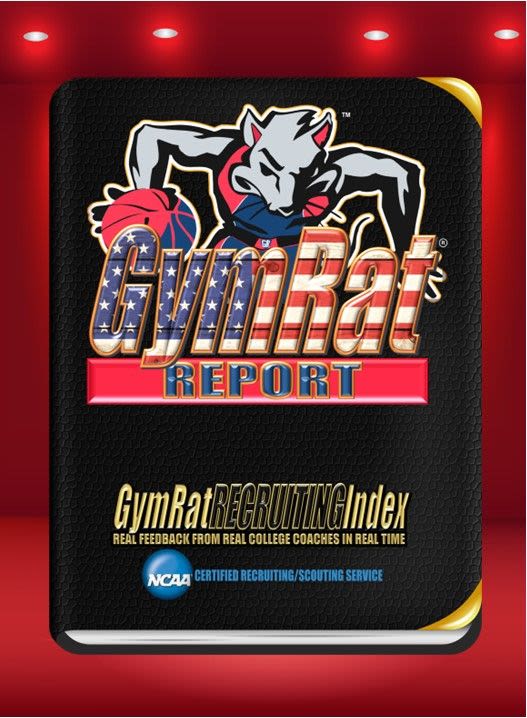
Kmack was born and raised in Potsdam, a small town in upstate New York, part of what the residents affectionately call “the North Country.”
It is a mostly rural area, and it’s not uncommon to see an Amish horse and buggy riding through town. It is closer to Canada’s capital of Ottawa than it is to any major American city. You have to drive over an hour just to get on the interstate.
While there are fields and dairy farms aplenty, it is far from being just another farm town as there are four colleges within 15 miles of each other -- SUNY Potsdam, SUNY Canton, Clarkson University and St. Lawrence University.
Kmack attended elementary school on Potsdam’s campus, where the school trained new teachers.
After classes were over for the day, Kmack grabbed his basketball out of his cubby and dribbled across campus to Maxcy Hall, home of hall of fame basketball coach Jerry Welsh’s Potsdam Bears.
During the 1980s, when Kmack was in high school, the Bears were one of the winningest college basketball programs in the country, boasting two Division III national championships, several runner-up finishes, and a 60-game win streak that for many years was second only to UCLA’s legendary 88-game streak.
Kmack's father, Steve, was an assistant coach on those teams.
“There was this legendary college basketball dynasty that was in place,” Kmack said. “That kind of set my basketball adrenaline level.”
Standing only 5-foot-7 and playing in an era where big men were the dominant force in the sport, Kmack used his tenacity and a 3-point shot that was ahead of its time to carve out a successful college basketball career at SUNY Plattsburgh.
During his senior season, Kmack led all of Division III in 3-point shooting percentage at 52.4%, which is still the top mark in Plattsburgh State history.
After finishing his playing career and graduating with a degree in business management in 1992, Kmack, like many athletes, was unsure of what to do with his playing days now over.
“I wondered, what the hell do I do with this degree?” he said. “Like, what do I do with this? Do I go to work for IBM? Do I go to work for GE? Do I try to get a job as a manager at a fast food joint?”
One thing Kmack realized quickly was that he wasn’t ready to leave his basketball roots. So, he joined the Plattsburgh bench as an assistant coach while pursuing a Master’s degree.
“I went back to what felt natural for me,” he said.
After finishing the graduate degree, Kmack received several job offers in the business world, but he hesitated.
“I think I would’ve been happy coaching at the Division III level and having enough money to pay my rent and keep gas in my car,” Kmack said. “I think I would’ve been OK that way. That’s the way I was wired at that point.”
Kmack did some consulting work for several colleges, but didn’t find it fulfilling. In 1996, he received an invitation to work for Paul Heiner, a fellow Plattsburgh alum and former player for Bob Knight during his days at West Point, who was starting a new company called Logic Technology Inc. in Schenectady, New York.
Kmack knew he had found his new home before he left the interview room.
“He said to me, ‘You need to speak two languages to work for me,’” Kmack said. “He said, ‘You need to speak English and basketball.’ I said, ‘Oh baby, now we’re in good shape because I’m fluent in both of those.’”
During his time at Plattsburgh, and for several years after starting at LTI, Kmack worked basketball camps hosted by local high schools or colleges. Some NBA players even held their own. Amateur players of all ages would sign up for these camps every summer to work on their skills.
While Kmack coached, it offered scouting and recruiting opportunities, then became a great way to stay connected to the sport while working for Heiner.
After several years, Kmack noticed a trend in the market that he didn’t like.
“The camp thing started to get really over-saturated,” Kmack said. “I mean everybody was running a camp, from the local seventh grade coach to Michael Jordan.”
At the same time, basketball tournaments sponsored by the Amateur Athletic Union began to take off.
Established in 1888, the AAU was initially an oversight committee for amateur sport in America, dealing mostly with colleges and the Olympics.
In 1978, the Olympics received their own governing body, and the AAU re-dedicated itself to youth sports. Most recently, it has become known for its youth basketball operations.
In 1972, the AAU established the first boys and girls basketball national championships. In the following two decades, those championships would grow to cover multiple age divisions, and smaller tournaments began to spring up under the AAU banner.
Kmack saw these tournaments as the way of the future.
“I remember going to those tournaments and thinking to myself man, this is a much better recruiting situation,” Kmack said. “I can watch these kids play and it’s not like just going to one high school game. I can go and watch a dozen teams at one time.”
“I started to think wow, this might be a decent little side business, or side hustle, that allows me to stick to my gym rat roots and still do what I was doing at LTI,” he said.
For Kmack, the bare minimum wouldn’t suffice. If he was going to run an event, he was going to do it right, and he was going to do it better.
To that end, he took a lesson from a fellow entrepreneur: Wendy’s founder Dave Thomas.
“Before he opened Wendy’s, he spent a lot of time doing competitive reconnaissance at Burger King and McDonalds,” Kmack said. “He wrote down what people liked, wrote down what they didn’t like. I wanted to do the same thing.”
Using Thomas’ methods, his own basketball background and skills he had picked up during his time in the corporate world, Kmack set out to accrue knowledge.
He attended other tournaments, big and small alike, making note of what he should do and, more importantly, what he shouldn’t.
Kmack used nearly all of his free time to focus on his project. Facilities needed to be booked. Merchandise had to be ordered. Staff needed hiring and the tournament needed to be marketed so teams would sign up.
Marketing in the pre-internet era was different, too.
To garner attention and get teams to sign up, Kmack printed the tournament application on a pamphlet and mailed it to high schools across the state. He also reached out to old connections from his playing and coaching days to find participants.
“People would take that little tri-fold, they would fill out their application, they would clip a check to it, and send it,” Kmack said. “We’d get rosters - handwritten, typed, written on napkins - that’s how we ran with year one.”
In 1998, three weeks after his son Sam,was born, Kmack held the first GymRat Challenge, the first AAU-sanctioned basketball event in New York, with Siena College and the University of Albany playing host.
Naming the event was simple, as it was a phrase that Kmack had tried to embody since he started dribbling across Potsdam’s campus.
While not sure exactly where he first heard the term gym rat, it stuck with Kmack from a young age, and seemed to be the most appropriate title for his new venture.
“To me, it was always a term of endearment,” Kmack said, “As a little kid, probably when I was six or seven, dribbling my basketball from Sibley Hall, or wherever we were, to Maxcy Hall and somebody probably just said, ‘This kid is an effin’ gym rat.’”
After the success of the first year, Kmack decided to keep it going. Over the next few years, he would add younger divisions to make the tournament all-encompassing.
In 2006, the tournament’s eighth year, Kmack had a daughter, Hayley. She was the inspiration to add a girls Challenge.
“I said, how can I justify to her the fact that I’m doing this?” Kmack said. “How can I justify that I’m only doing this for the boys?”
The girls weekend is now arguably even more popular than the boys. In 2019, 264 teams participated in the boys GymRat Challenge. For the girls weekend that year, over 280 teams participated, with nearly 100 more on the waiting list.
In 2012, after running the tournament for 15 years on the side, Kmack came to a realization while traveling back from a baseball tournament with his son one weekend: He really didn’t want to go back to work the next day.
“I dreaded going back into the office,” he said. “Dreaded it.”
“The first meeting I went to, I think it was an hour and fifteen minutes, I was listening to two of my colleagues just backbite each other, over nothing, over stuff that was a complete distraction from the overall purpose of the business. That’s when I made the decision, I think I’m going to make a go on my own.”
The slog of corporate life wasn’t worth it anymore. On top of that, Kmack now had three children and didn’t want to miss out on any part of them growing up.
Initially, Kmack wanted to start his own IT consulting business so that he could freely control how much he worked. Heiner told him no. Instead, he negotiated with Kmack to position himself so that he could stay on at LTI while working on his tournament close to full-time.
For the last decade, Kmack has spent nearly every day tinkering with his events, innovating and implementing new ideas to keep teams coming back.
The GymRat Challenge has become one of the biggest annual events in the Albany area, and Kmack is proud of the effects his business has had on the community.
According to the GymRat website, Caomin Associates, an economic development company based out of Saratoga Springs, New York did a study of the Challenge and how it affects the Albany area. They found that the tournament injects $19.6 million annually into the local economy, including $1.1 million in local and state tax revenue.
“That’s an incredible piece of this that can’t be minimized,” Kmack said.
“He could’ve moved that event out of Albany county,” Marion said.
“He did not have to keep it there, he’s chosen to. I give him credit for that. He likes his community. Not just Guilderland where his kids went to school but he likes the Capital district. He’s chosen to keep his event there. He can package this event and hold it in other states. He has that ability to do so, he’s chosen not to. I give him credit for that. I won’t give him credit for a lot of things, but I give him credit for that.”
Some of the biggest beneficiaries of the Challenge are local high school and AAU teams. Kmack will always go the extra mile to help a fellow hooper, giving teams opportunities to earn for their programs.
“There are countless AAU programs and high school teams that owe new uniforms, travel money, and program money to John,” Dubay said. “He’ll let them do clocks, he’ll let them work on a site, maybe in concessions. Whatever it may be, John will do something to allow that team to benefit from the tournament.
"He might pay the director, and then they buy new uniforms. That volunteer work, even though the kids are volunteering, the program is getting rewarded.”
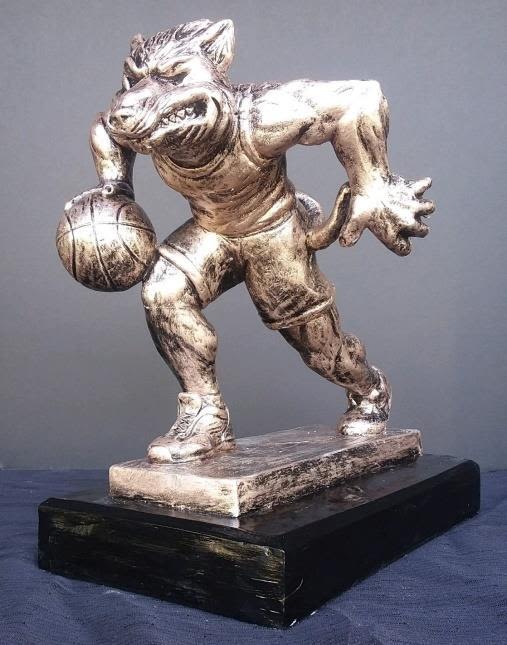
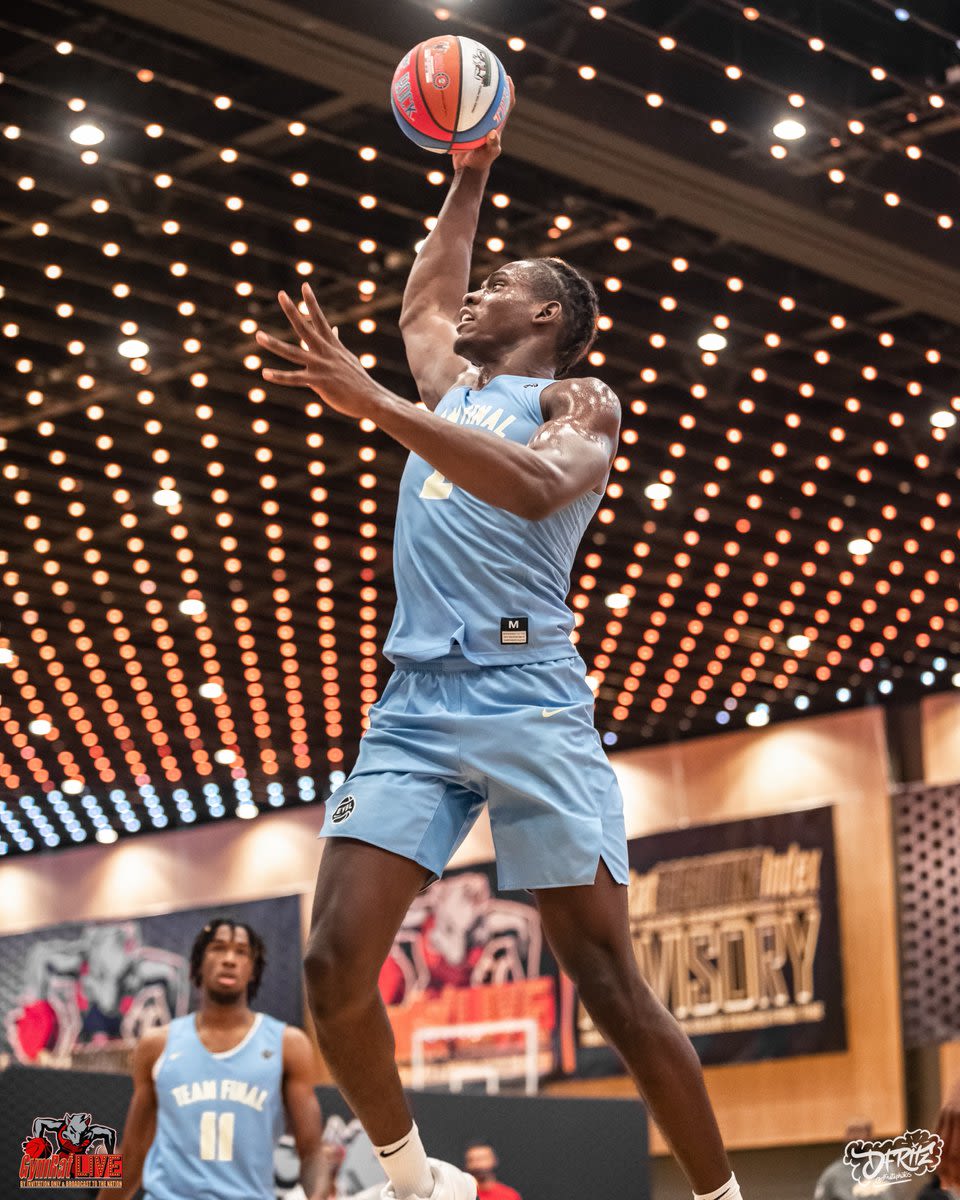
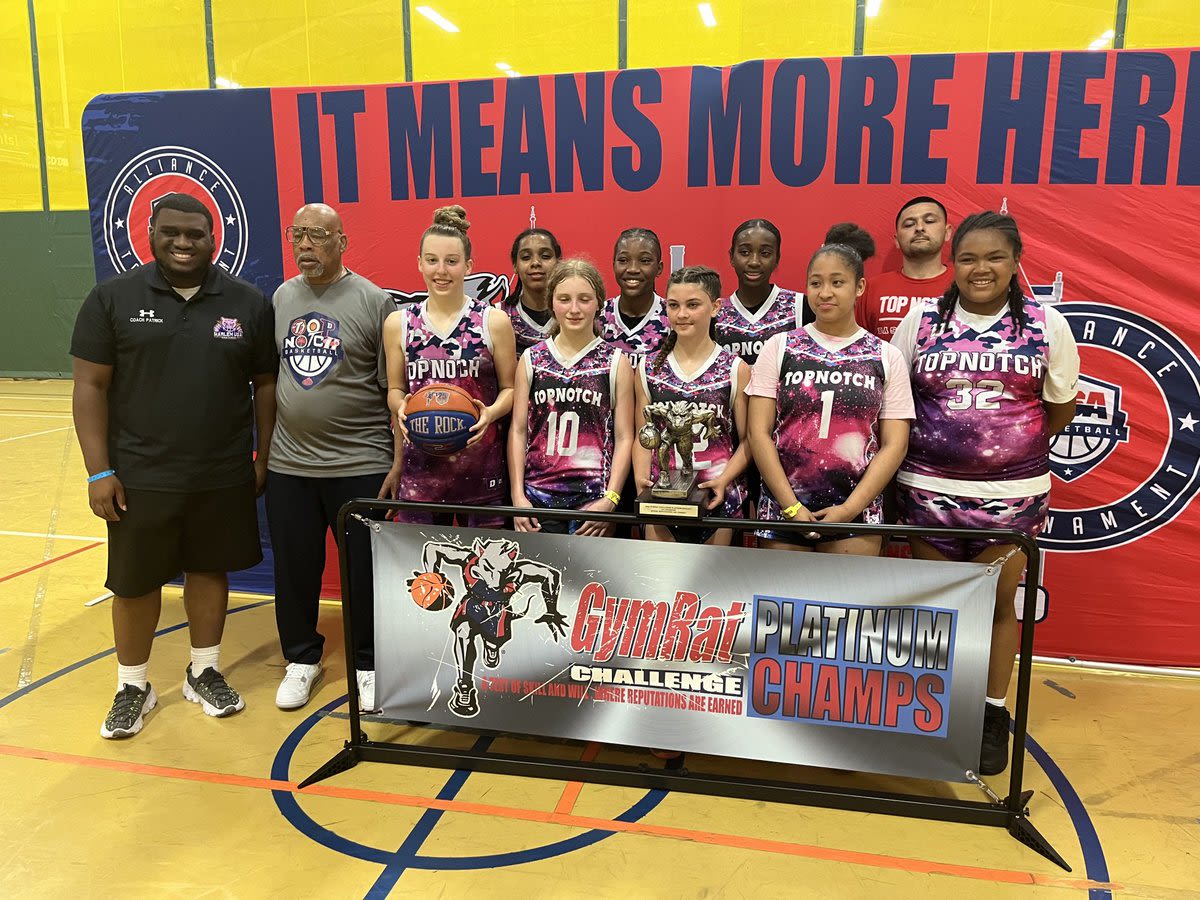
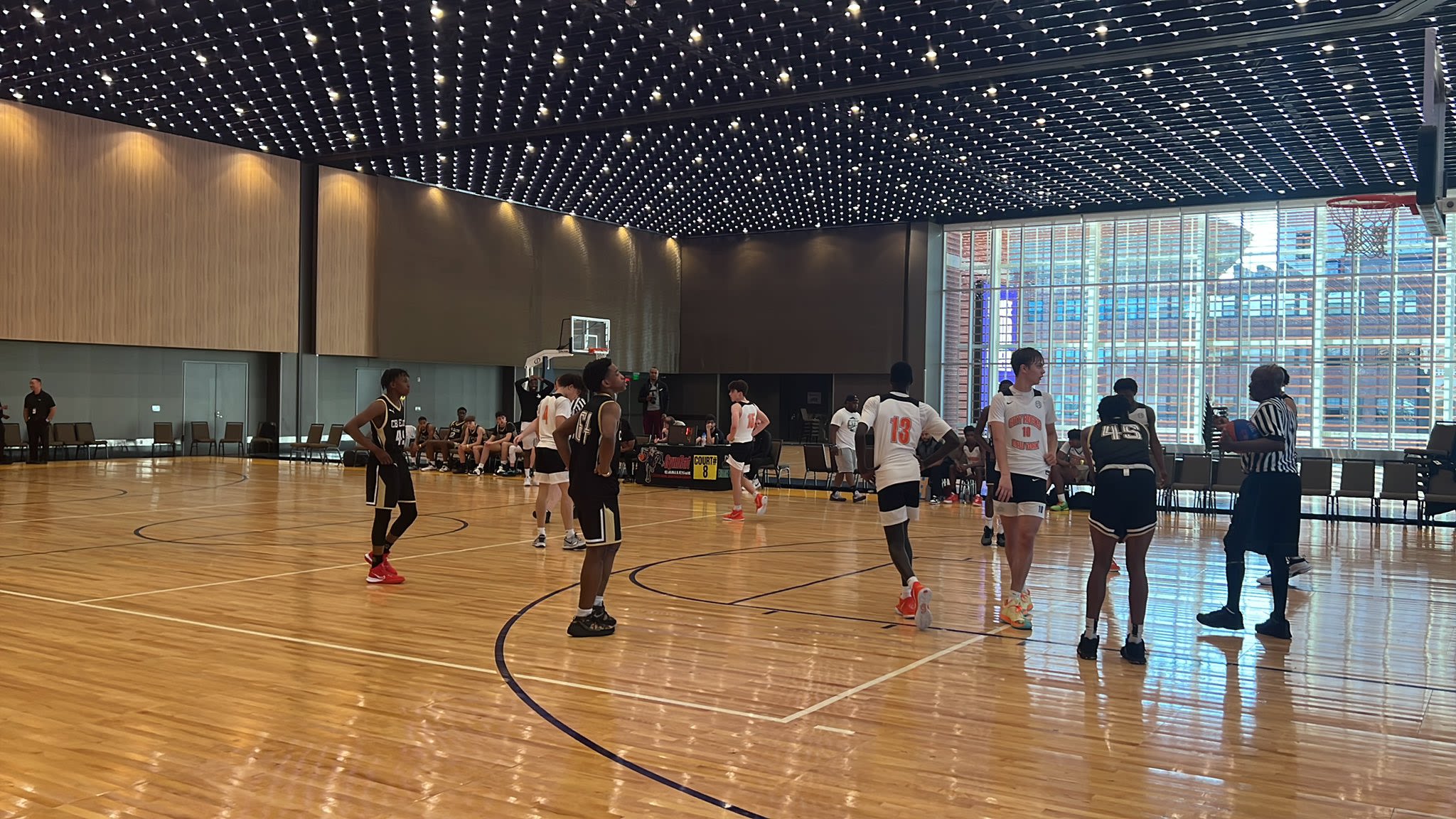
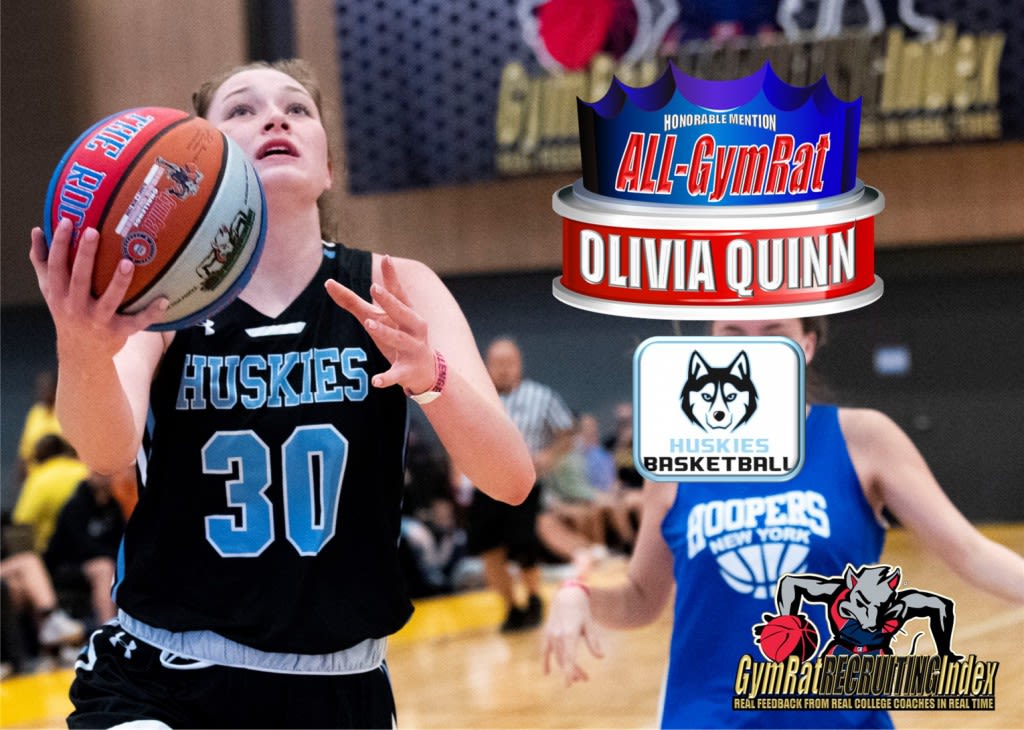
In an industry where longevity is rare, Kmack has adapted to every obstacle and shift in the market.
When the COVID-19 pandemic hit, AAU basketball, like the rest of the world, came to a standstill. Since Kmack had gone full-time with the tournament, he was now without his main source of income.
The EYBL and other shoe circuits, such as the ones run by Under Armor and Adidas, also shut down. Even when things started to slowly open back up, the shoe companies were hesitant to hold events.
In early 2021 Hart, along with several other coaches within the EYBL, wanted to get his kids back on the floor. “Me and some of the other EYBL teams, four or five of them,” he said, “we said hey, there’s no Nike circuit this year, let’s play each other. So we said we’ll come down to you in New York City, we’ll go to you in Philly and then you guys come upstate one time.”
As he was preparing to host his set of games, Hart got an idea.
“So when they were going to come upstate I said to myself, I could host this thing myself, or I could go to the best tournament operator there is and let him run it for me and it’ll be professional, and he’ll trick it out and do ten things I would’ve never done.”
“I pulled those eight teams together for him, and then I just knew he’d do it better.”
While the pandemic had started to fizzle by then with the release of the first vaccines, the venture was still a huge risk. Kmack responded the only way he knew how.
“You’re damn right I will,” he said.
After getting approval from the governor’s office and the department of health, Kmack and Hart put on the GymRat LIVE, an eight team Nike showcase featuring some of the top high school players in the country at the time such as Emoni Bates, Jalen Duren, Kyle Filipowski and Derrick Lively II.
“For it to not be a sneaker company event, it’s very well run, very organized, a lot of exposure, good competition, good teams,” said Kyle Sample, head coach of Kyle Lowry’s K-Low Elite team.
“You won’t go to a non-sneaker company event and see it this well run and well organized anywhere. It’s hard to find. There’s only two or three people in the country that can do this.”
For an event with this level of talent, Kmack partnered with the Big East conference to use the LIVE event as a mini-camp for prospective Division I officials.
Officials with hopes of working Big East games are evaluated on how they handle the high-stakes and frenetic, fast-paced play of the games, as well as the hot-blooded emotions of coaches, players and fans alike.
John Gaffney, a Big East official of 20 years, was one of the evaluators for the 2022 LIVE event.
"These tournaments are serious, serious business for everyone involved," said Gaffney.
"You need good people. The difference is in the details."
Kmack then took things a step further and broadcast the games live over the internet for fans and coaches to watch.
“That is a huge buzz in the marketplace now because nobody had ever done that before,” Kmack said. “Nobody had ever taken an event at that level and done a full broadcast of the entire thing.”
“He literally had ESPN level broadcasts,” Hart said, “not like some guy with an iPad or some kid. Real broadcasts.”
“That’s kind of part of the brand, to provide that over the top experience that you’re not going to get anywhere else," Kmack said.
The tournament was a massive success, so much so that the following year some of the best AAU teams in the country wanted to get in.
Instead of just Nike sponsored teams, for the first time, teams from multiple shoe circuits shared the court.
“Adding the different shoe companies all in the same place, that became innovative,” Kmack said. “So not only did we have literally the best players in the country competing head to head, but we put them on a platform that had never been seen before.”
“It’s one of the only things I know of where it’s only shoe circuit teams, but they’re from different shoe circuits playing against each other,” Hart said.
Kmack and Hart hope the LIVE event will continue to grow. They added a girls event this year, which was also well received.
“If they figure something out, other people are going to have to adjust to catch up with them,” Sample said.
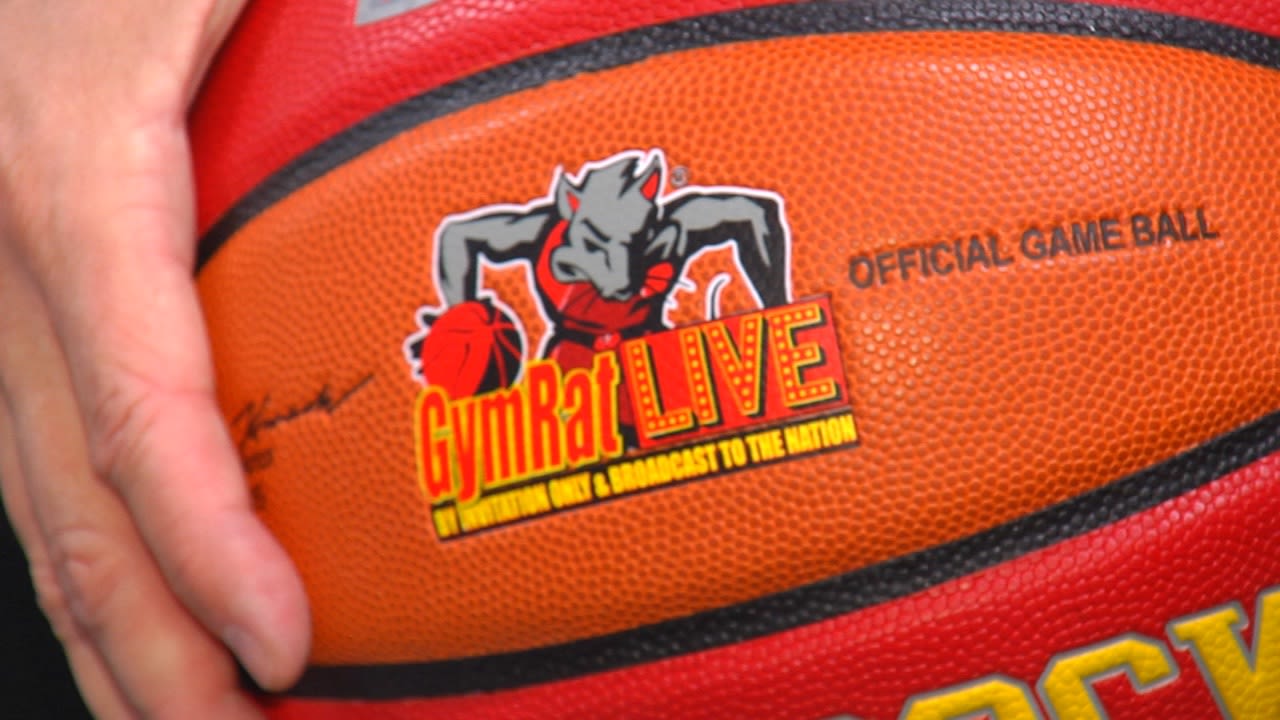
This year marked the 25th anniversary of the GymRat Challenge.
While it started as a simple way to stay connected with a sport that Kmack loves, it has grown to become one of the premier grassroots basketball events in the country.
“You see how people go about their business of running events, and John is… (there's) no one is better,” Huerter said.
For the first time in the GymRat’s history, Kmack is in the process of organizing an event outside of Albany.
Nook Sports, Inc. is finishing construction on what will be the largest indoor athletic facility in North America in Hamilton, Ohio outside of Cincinnati.
When it is finished, Kmack will run one of the biggest single-roof basketball tournaments in the world at the complex, bringing the GymRat brand with him.
Kmack never expected the tournament to become what it has.
To him, it was a way to maintain an identity, and to stay close to the game and the people he’d grown to love.
“I guess when you start off with something at the beginning, I wasn’t thinking about longevity,” Kmack said.
“It was just something I wanted to do to stay as close to my gym rat roots as possible as I kind of left an everyday basketball life and graduated onto whatever was going to be the next part of my life, working in business in the corporate world. Establishing the GymRat was a way of maintaining my connections to some of those people."
Much like he never thought about how the GymRat would evolve, neither has Kmack thought about stopping any time soon.
“I enjoy it, it’s a passion, and I feel like we find new things every year,” he said.
“There’s not an end that I see. I guess I’m not even thinking about a succession plan.
“I’m going to run it until they drag me away."
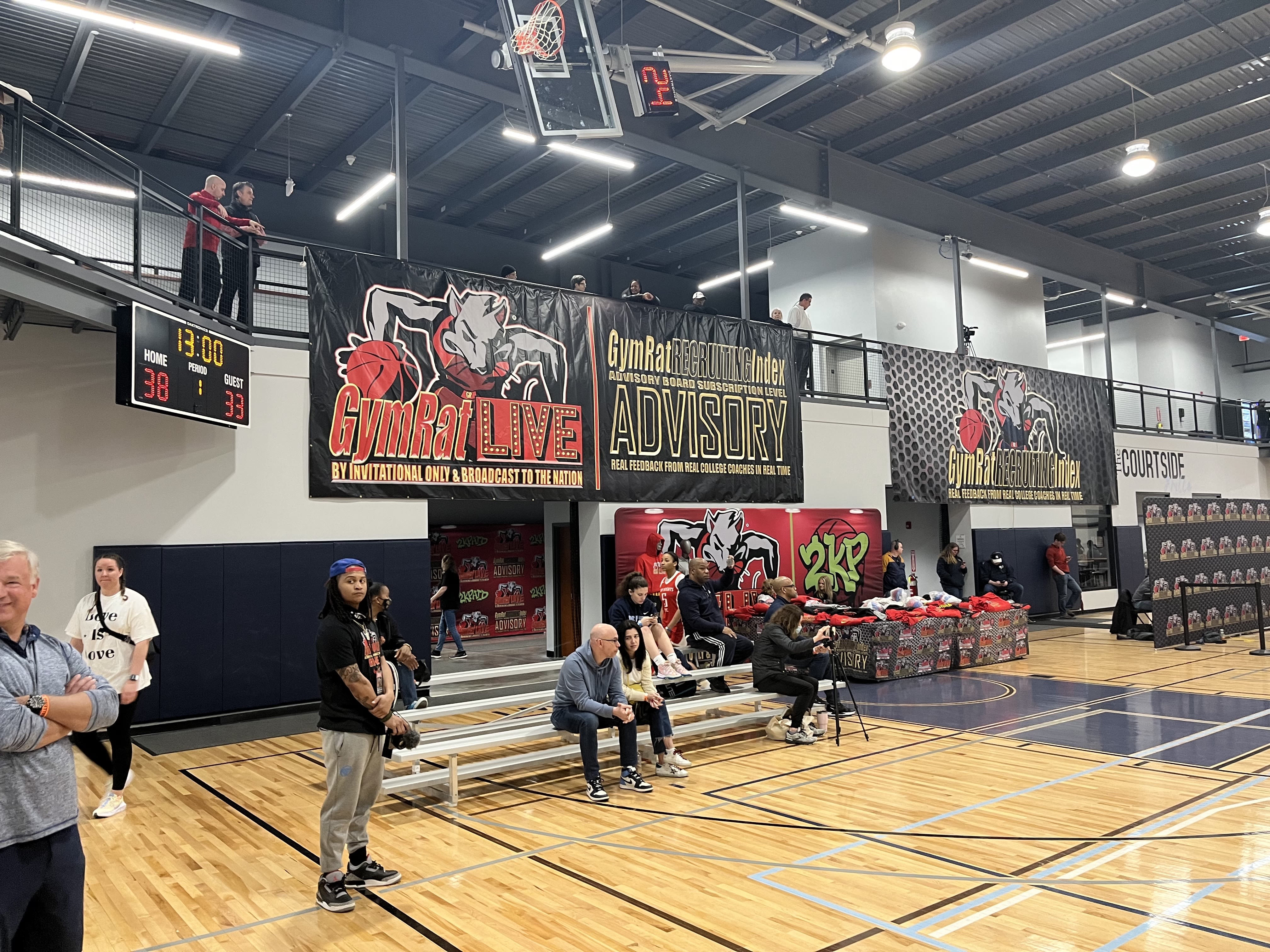
Afterword: While in college, I worked several GymRat events, and I played in one while in high school. This article is not reflective of my personal experiences at these events.
